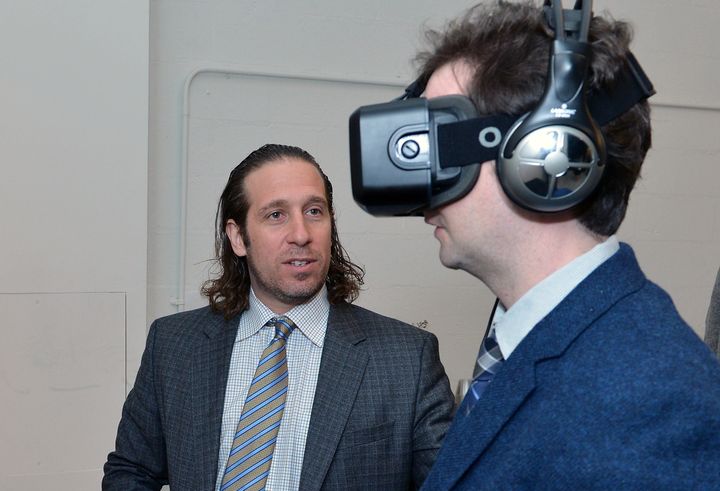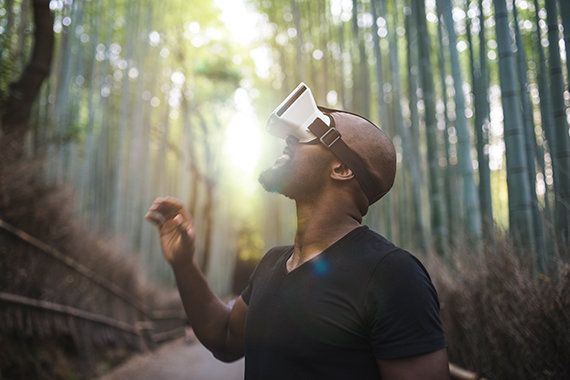A recent report from academics at the University of California, Santa Barbara, lays bare the devastating impact plastics are having on the environment. Humans have produced 8.3 billion tonnes of it since the 1950s, equivalent to the weight of one billion elephants.
If you spread out all the plastic ankle deep, it would cover the landmass of Argentina. About 80 percent of it is never recycled, instead ending up in landfill, and at the present rate, we will have produced 34 billion tonnes by 2050.
Such figures are shocking, but are they shocking enough? Which is to say, even though we might be thinking, ‘How awful, something must be done’, how many of us are likely to change our buying habits because of what we’ve just read?
We’re constantly being told about the depleting ozone layer, the melting ice caps, extreme weather phenomenon and wildlife habitat loss, but most of us look out onto a world that doesn’t seem to change all that much from day to day.
As environmentalists point out, such disassociation is one of the main reasons we’re still failing to properly tackle climate change and the effect our own behaviour is having on the planet.

The potential of virtual reality
Step forward Jeremy Bailenson, professor of communication at Stanford University. He runs the Virtual Human Interaction Lab (VHIL) and last year his team put together a VR game that seeks not only to explain ocean acidification, but to generate an active response in those who play it.
“One of the greatest challenges to staving off irrevocable climate change is getting people to visualise how driving a gas-guzzling car or living in an energy inefficient home is contributing to the problem,” says Bailenson. “Virtual reality can give everyone, regardless of where they live, the kind of experience needed to generate the urgency required to prevent environmental calamity.”
Previously the VHIL ran a series of experiments using VR and the results are striking. For example, they discovered that when a person had a VR experience of cutting down a redwood tree, that person was more likely to conserve paper.
When they had the experience of taking a shower and watching their avatar eating coal equivalent to the energy being used, they were more likely to conserve water. Compared to watching or reading about ecological issues, VR was far more likely to change their habits for the better. Essentially, the immersion of VR creates a more empathetic mind-set in users, who are then more likely to take action as a response.
VR and ocean acidification
Following on from more simple experiments, the Stanford team decided to focus their attention on ocean acidification. This is the process by which oceans absorb human-produced carbon dioxide, causing the water’s pH to drop and radically and alter the environment, killing off countless species of marine life.
To this end VHIL have created a VR experience of the reef around the Italian island of Ischia. Here the natural effect of volcanic vents creates the same acidification as pollution does. Through the VR you become a piece of coral and experience an accelerated version of this process of acidification, as carbon dioxide changes the brilliantly-coloured environment, teeming with life, to one that is essentially colourless and lifeless.
VR is especially impactful in instances like this because it’s an environment most of us never get to see, much like the polar ice caps or the tropical rainforest.

From VR to AR
The BBC’s David Attenborough has also produced a VR experience to do with coral reefs. You join him in the submersible vehicle Triton as he takes you on a tour of the Great Barrier Reef, reminding us along the way that coral bleaching through pollution is a major threat to one of the world’s natural wonders.
Similarly, filmmaker Michael Owen has produced a VR film from Russia’s Lake Baikal, a UNESCO World Heritage Site and endangered freshwater resource. “The viewer can make a visceral connection to the place and people they are watching that can result in a strong sense of empathy,” says Owen. “This makes VR a powerful tool for engaging audiences and shaping their opinions.”
Along with VR there’ also AR – Augmented Reality. Most people know AR from games like Pokémon Go, or else through different apps that can be downloaded to a smartphone and function as virtual tour guides for various city destinations.
But there are opportunities for games and concepts with a more environmental edge to them, such as that created by the Dutch team behind Doom Prepper Sailors. It mixes remote control boats with AR to create a game that has the ultimate intention of helping to clean up plastic debris from rivers and canals, as well as encourage a long-term awareness of water pollution.

Other ways VR is being used
VR is also making an impact in more indirect ways. Architects are increasingly making use of it to better understand how to make their buildings as environmentally efficient as possible. For example, through VR they can assess how best to utilise natural light, reducing dependency on artificial light sources.
VR has also become a part of thinking about animal welfare, with experiences like iAnimal, a harrowing but necessary examination of factory farms. If it causes us to think more about the meat we eat, that can only be a good result for the planet – according to the World Watch Institute, animal agriculture amounts to as much as 50 percent of the world’s greenhouse gases.
So while VR remains a technology that has not quite broken the mainstream yet, when it does there will be a huge opportunity to use it for raising ecological awareness. After all, if you find yourself walking around an immersive environment in which thousands of miles of the landscape are covered in plastic waste, it’s not something you’re going to forget in a hurry.
And more to the point, you’ll think more seriously about how you can change your own habits to do something about it.